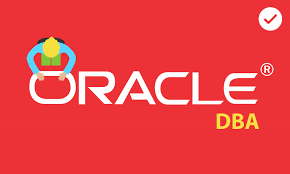 1) What is a patch and name some different types of patches?
1) What is a patch and name some different types of patches?
• Patch is a program which fixes the bug.
There are 4 different types of patches
One-off patch:
This is the simplest type of patch. It is created to resolve a particular problem.
Mini pack Patch:
o It is a collection of one-off patches related to a particular module or product.
o Mini Pack version of module is denoted by Alphabetic characters.
Family pack patch:
o This is a collection of mini pack patches in one family.
o Alphabetic characters denote the family pack version.
Maintenance pack patch:
o This is a collection of family pack patches.
o Oracle Applications Release 11.5.10 is an example of Maintenance pack.
2) List out APPS 11i post installation steps?
• Shutdown all Oracle Application Processes
• Apply Inter-Operability Patch(3830807)
• Apply Discoverer Patch(3170128)
• Re link all Oracle Applications executables
• Finally, Restart Oracle Application Processes
3) What are the contents of patch and drivers present in patching?
Contents of patch:
• Readme files
• Driver files
• Metadata files
• Replacement files
Drivers present in patching:
• C driver – It copies all the files and links the executables
• D driver – It is responsible for running SQL scripts which updates the database.
• G driver – It is responsible for generating forms, reports and message files.
• U driver – It is a united driver containing all copy and database actions.
4) What do you do if patch fails?
• Evaluate log files to determine the cause of the error.
• Repair the cause of error.
• Now Restart Adpatch.
• Answer ‘Yes’ when adpatch asks if you want to continue the previous session.
• Adpatch starts from where it left off by skipping all completed jobs.
5) How can I determine the effects a patch will have on my application system?
This can be done by patch wizard in the Oracle Applications manager.
• Checking total number of files in the patch and which are installed.
• Products that contain updated files.
• Total no of files introduced by the patch.
• Files on the target system changed by the patch.
• Files which depend on patched files.
6) How can you reduce the downtime when you have to apply multiple patches?
• You can reduce the downtime by merging all the patches into one single patch using admergepatch (admrgpch) tool.
• You can also apply multiple patches one by one by choosing options nocompiledb, nocompilejsp, and nolink.
• Compilation of invalid objects, jsp’s and relinking can be skipped till the last patch is applied.
• In the last patch you can compile all of them and then relink.
• You can also choose the max number of workers which your CPU permits.
7) List out the Log Files created on running patch?
Running the patch creates the following log files
• Adpatch.log: Information about the patch run will be stored here..
• Adpatch.lgi: It contains information about the which has been discarded by adpatch.log
• For example, the files which has not been copied by the adpatch.
• Adrelink.log: Relinking information performed by patch will be stored here..
• Adworkxx.log: Workers log details will be stored here.
8) What are the important AD tables and define their importance?
• AD_APPL_TOPS: It contains information about all APPL_TOP’s using the instance.
• AD_BUGS: It stores information about all different bug fixes applied.
• AD_PATCH_DRIVER_MINIPACKS: Mini_packs information will be stored here.
• AD_PATCH_RUN_BUGS: It stores information about all applied and updated bug fixes.
• AD_FILES: It stores information about files.
9) Is it possible to revert the patch application? Explain in detail how?
• Yes, it’s possible to revert the patching but not 100% sure.
• In test environment it’s always recommended to take the full backup of the database, apply the patch and revert from backup.
• Adpatch is responsible for copying the files from the patch.
• From the patch log, drop the database objects created by the patch.
• Similarly forms in the G driver should be replaced from the backup taken by Adpatch and should be manually generated.
10) What is a view and how do you recreate a view which becomes invalid when you recreate a patch?
• View is used for accessing a particular portion of a table.
• A view is also called as virtual table.
• For recreating the view you can search for the view name in the SQL directory.
• We can recreate the views running scripts located in the Product top/patch/115/sql directory.
• Most views are recreated using sql script.